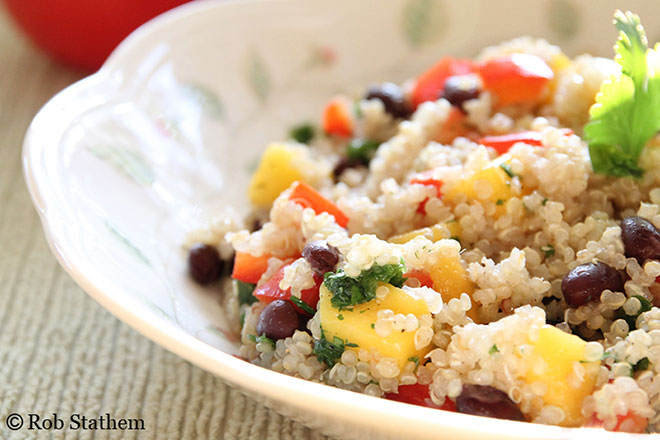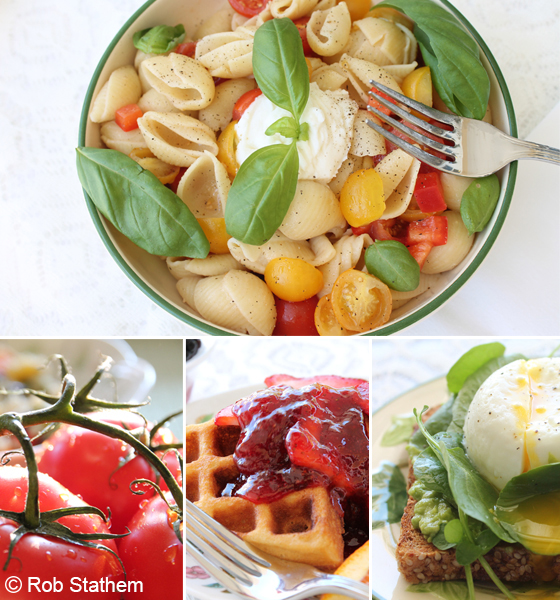Best Practices for Restaurant Photography

Delightful photos of food can influence the decision factor of potential customers.
This is a guest article written by Rob Stathem, a professional food photographer who works with restaurants, hotels, B&Bs, and casinos to help create mouth-watering food photographs that get people craving his client’s food. As a devout foodie himself, through the creation of Food Snaps, Rob has taken his passion for food and transformed it into a valuable food photography service that every food professional needs. For more information on how Rob can help you get the most out of your food photographs, you can reach him by phone at 949-939-0277, or visit his website at foodsnaps.net.
Whether you’re an executive of a five-star restaurant, or a caterer of an up and coming catering company, you need to have quality food photographs that help entice your patrons to take that first bite! Here are five tips to capture irresistible food images for your website or menu:
1. Feature your best dishes
Before you start taking photographs of your menu items, you want to make sure that your images will be congruent with the marketing goals of your business.
For example, if you own a seafood restaurant and you’re marketing exotic fish dishes for the middle aged target audience, it would be a poor choice to instead photograph a burger that you feature on your menu. If your specialty is fish, you want to make sure you’re showcasing seafood!
2. Choose a good camera
If quality and creative control is what you’re after, than, it might be wise to invest in a DSLR camera! DSLR cameras will give you full creative control in how you photograph food. By choosing a DSLR camera, you have the ability to change lenses as well as what you want in focus, among other things.
A simple point and shoot camera will put your subjects in complete focus, therefore, disabling your ability to fine tune what you want to be in focus. For instance, let’s say your photographing Creme Brulee and you want to put focus on the raspberries and mint garnish, a DSLR camera will give you that fine tune focus control.
3. Dishware matters
Once you’ve determined your image marketing goals and the best camera to use, it’s important to think about dishware. What will your food be positioned on? If you’re showcasing a plate of food with vibrant colors, than, it’s best to use white colored plates. White colored plates allow your vibrant food to become the hero shot. In some instances, dull looking food (like oatmeal) can be placed in colorful dishware to help accentuate the oatmeal.
There are all kinds of dishware: bowls, plates, platters, etc, and each come in different weight, size, and style. Think about what food you’re preparing and how the geometry of the food will match or complement the dishware. If you’re preparing a few mini fruit tarts, a circular platter would follow the geometry of the circular fruit tarts. Use your best judgment when deciding what dishware to use for your food.
4. Consult a food stylist
In order to ensure the perfect image, consider the importance of a food stylist. A food stylist is different from a chef. A food stylists’ job is to ensure that the food looks its absolute best on camera!
For example, a food stylist may re-position a mint leaf or garnish to point towards the direction of the camera, or, he/she may apply oil to the vegetables to make them look fresh and appetizing. If you don’t have a food stylist to work with, make sure you coordinate with your chef on how you want to position/place food items on a dish. Communication is key!

Proper plating and lighting makes for a great dish photo.
5. Observe proper lighting
Last, but not least, don’t forget the importance of lighting. Lighting is a crucial aspect to getting great food photographs. If you don’t have lighting equipment, position your food in your establishment near an open window. You may also need to diffuse the light depending on how harsh the light is. If you have direct sunlight shining through, you’ll definitely want to diffuse the sunlight with muslin or tissue paper. Tape the muslin or tissue paper to the window and this will create a nice diffusion. If you photograph food that has harsh sunlight with no diffusion, you’ll end up with “hot spots” or areas in your food that are completely white washed.
Back window lighting is great because it gives dimension and depth to your food. You’ll also want to consider using a fill card such as a mirror, white foam card–anything to bounce light to the front area of your food. If you don’t have any windows in your restaurant, place your food outside on a table in the shade.
By following the above principles, you’ll end up with photographs to be proud of showcasing on your website or menu.
Photos by Rob Stathem

The photos are beautiful. Thank..لامپ کم مصرف–کرکره برقی–راهبند اتوماتیک–راهبند